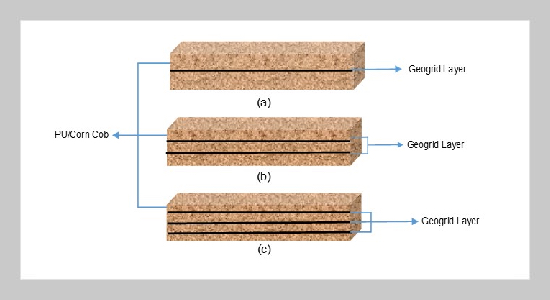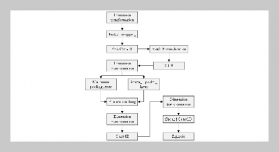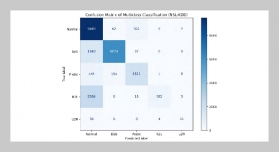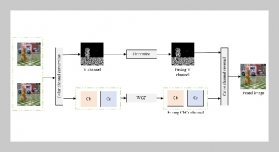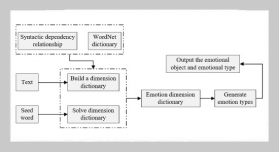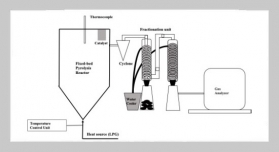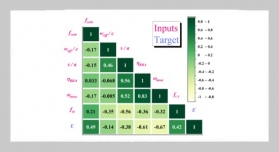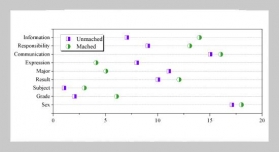- [1] H. B. Atinkut, T. Yan, F. Zhang, S. Qin, H. Gai, and Q. Liu, (2020) “Cognition of agriculture waste and pay ments for a circular agriculture model in Central China" Scientific Reports 10(1): 1–15. DOI: 10.1038/s41598 020-67358-y.
- [2] H.Ibrahim, D. Hammiche, A. Boukerrou, and C. Delaite, (2020) “Enhancement of biocomposites properties using different dispersing agents" Materials Today: Pro ceedings 36: 41–46. DOI: 10.1016/j.matpr.2020.05.120.
- [3] K.Vijayananth, B. Paramasivam, and S. Raju, (2024) “Measurement of mechanical and thermal performance of cigarette filter fibres/eggshell particles reinforced polymer composite using integrated CRITIC-TODIM approach" Measurement 228: 114251. DOI: https://doi.org/10.1016/j.measurement.2024.114251.
- [4] R. Phiri, S. M. Rangappa, S. Siengchin, and D. Marinkovic, (2023) “Agro-Waste Natural Fiber Sample Preparation Techniques for Bio-Composites Development: Methodological Insights" Facta Universitatis, Series: Mechanical Engineering 21(4): 631–656. DOI: 10.22190/FUME230905046P.
- [5] J. Li, Q. Yan, and Z. Cai, (2021) “Mechanical properties and characteristics of structural insulated panels with a novel cellulose nanofibril-based composite foam core" Journal of Sandwich Structures & Materials 23(5): 1701–1716. DOI: 10.1177/1099636220902051.
- [6] W. E. Primaningtyas, R. R. Sakura, A. Biqi, and C. Handoyo, (2018) “Sintesis Komposit Kampas Rem Be bas Asbes Berpenguat Serbuk Kulit Singkong" REM (Rekayasa Energi Manufaktur) Jurnal 3(2): 91–95. DOI: 10.21070/r.e.m.v3i2.1614.
- [7] S. Zhu, Y. Guo, D. Tu, Y. Chen, S. Liu, W. Li, and L. Wang, (2018) “Water absorption, mechanical, and crystallization properties of high-density polyethylene filled with corncob powder" BioResources 13(2): 3778–3792. DOI: 10.15376/biores.13.2.3778-3792.
- [8] B. Chen, D. Cai, Z. Luo, C. Chen, C. Zhang, P. Qin, H. Cao, and T. Tan, (2018) “Corncob residual reinforced polyethylene composites considering the biorefinery process and the enhancement of performance" Journal of Cleaner Production 198: 452–462. DOI: 10.1016/j.jclepro.2018.07.080.
- [9] S. B. Loganathan and H. K. Shivanand, (2015) “Effect of Core Thickness and Core Density on Low Velocity Impact Behavior of Sandwich Panels with PU Foam Core" Journal of Minerals and Materials Characterization and Engineering 03(03): 164–170. DOI: 10. 4236/jmmce.2015.33019.
- [10] S.-f. Xu, (2011) “Talking about the comprehensive uti lization of corncob" Sci-Tech Inf. Dev. Econ. 21(17): 174–175. DOI: 10.3969/j.issn.1005-6033.2011.17.074.
- [11] A.K.R.Pawestri, W.Hasanah, and A.Murphy, (2018) “Studi Karakteristik Komposit Sabut Kelapa dan Serat Daun Nanas sebagai Peredam Bunyi" Jurnal Teknologi Bahan Alam2(2): 112–117.
- [12] D. Wijaya and S. Hidayat, (2022) “Effect of fibre volume fraction on hybrid composites of sugarcanefibre and coconut coirfibre on tensile strength" Prosiding The 13th Industrial Research Workshop and National Seminar Bandung: 78–83.
- [13] Balkhaya, Irwansyah, and N. Fitriadi, (2024) “The Investigation of Macro Structure of Composite Material Mixed Rice Husk with Polyurethane as Insulation Material in Fish Cold Storage Boxes" Jurnal Inotera 9(1): 1–7. DOI: 10.31572/inotera.vol9.iss1.2024.id292.
- [14] W. W. Raharjo, R. Soenoko, Y. S. Irawan, and A. Suprapto, (2017) “Improvement in Mechanical Properties of Cantala Fiber and Short Cantala/Recycled High-Density Polyethylene Composite through Chemical Treatment" Preprints (October): DOI: 10.20944/preprints201710.0134.v1.
- [15] V. Kavimani, B. Paramasivam, R. Sasikumar, and S. Venkatesh, (2024) “A CRITIC integrated WASPAS approach for selection of natural and synthetic fibers embed ded hybrid polymer composite configuration" Multiscale and Multidisciplinary Modeling, Experiments and Design 7(3): 1721–1736. DOI: 10.1007/s41939-023 00301-6.
- [16] M. A. Azmi, H. Z. Abdullah, and M. I. Idris, (2013) “Properties of polyurethane foam/coconut coir fiber as a core material and as a sandwich composites component" IOP Conference Series: Materials Science and Engineering 50(1): DOI: 10.1088/1757-899X/50/1/012067.
- [17] M. M. Ratwani. Composite Materials and Sandwich Structures A Primer. NATO:Materials &Design,2010, 16.
- [18] H. M. Somarathna, S. N. Raman, D. Mohotti, A. A. Mutalib, and K. H. Badri, (2018) “The use of polyurethane for structural and infrastructural engineer ing applications: A state-of-the-art review" Construction and Building Materials 190: 995–1014. DOI: 10.1016/j.conbuildmat.2018.09.166.
- [19] B. Vijaya Ramnath, K. Alagarraja, and C. Elanchezhian, (2019) “Review on sandwich composite and their applications" Materials Today: Proceedings 16: 859–864. DOI: 10.1016/j.matpr.2019.05.169.
- [20] R. Vignjevic, J. Campbell, K. Hughes, M. Orłowski, S. Garcea, P. Withers, and J. Reed, (2019) “Soft body impact resistance of composite foam core sandwich pan els with unidirectional corrugated and tubular reinforce ments" International Journal of Impact Engineering 132(June): DOI: 10.1016/j.ijimpeng.2019.103320.
- [21] Ł. Smakosz and J. Tejchman, (2014) “Evaluation of strength, deformability and failure mode of composite structural insulated panels" Materials and Design 54: 1068–1082. DOI: 10.1016/j.matdes.2013.09.032.
- [22] C. Chen, X. Legrand, Y. Hong, and P. Wang, (2023) “Investigation and prediction of laminate quality and in terlaminar mechanical performance of the tufted sand wich composites with different core structures" Com posite Structures 306(December 2022): 116594. DOI: 10.1016/j.compstruct.2022.116594.
- [23] G. Pramudi, W. W. Raharjo, and D. Ariawan, (2022) “Investigation of Flexural strength of Sandwich Panels Re cycled Carbon Fibre/Polyester with Cotton Mesh Fabric Reinforcement in Polyurethane Core" Journal of Ap plied Science and Engineering 25(5): 823–831. DOI: 10.6180/jase.202210_25(5).0013.
- [24] M.P. Arunkumar, J. Pitchaimani, K. V. Gangadharan, and M.C. Leninbabu, (2018) “Vibro-acoustic response and sound transmission loss characteristics of truss core sandwich panel filled with foam" Aerospace Science and Technology 78: 1–11. DOI: 10.1016/j.ast.2018.03.029.
- [25] S.C.K.Yuen,G.Cunliffe, and M.C.duPlessis, (2017) “Blast response of cladding sandwich panels with tubular cores" International Journal of Impact Engineering 110: 266–278. DOI: 10.1016/j.ijimpeng.2017.04.016.
- [26] M. E. Toygar, K. F. Tee, F. K. Maleki, and A. C. Bal aban, (2019) “Experimental, analytical and numerical study of mechanical properties and fracture energy for com posite sandwich beams" Journal of Sandwich Struc tures and Materials 21(3): 1167–1189. DOI: 10.1177/1099636217710003.
- [27] P. Ardiyanto, P. Suwarta, Sutikno, I. Sidharta, and W. Wijanarko, (2015) “Thickness Effect of Polyurethane Foam Core on the Flexural Behaviour of Composite Sand wich Materials" Applied Mechanics and Materials 758: 1–6. DOI: 10.4028/www.scientific.net/amm.758.1.
- [28] F. Hassanpour Roudbeneh, G. Liaghat, H. Sabouri, and H. Hadavinia, (2019) “Experimental investigation of impact loading on honeycomb sandwich panels filled with foam"International JournalofCrashworthiness 24(2): 199–210. DOI: 10.1080/13588265.2018.1426233.
- [29] M. Mohamed, R. Hussein, A. Abutunis, Z. Huo, K. Chandrashekhara, and L. H. Sneed, (2016) “Manu facturing and evaluation of polyurethane composite struc tural insulated panels" Journal of Sandwich Struc tures and Materials 18(6): 769–789. DOI: 10.1177/ 1099636215626597.
- [30] Z. Salleh, M. M. Islam, J. A. Epaarachchi, and H. Su, (2016) “Mechanical properties of sandwich compos ite made of syntactic foam core and GFRP skins" AIMS Materials Science 3(4): 1704–1727. DOI: 10.3934/matersci.2016.4.1704.
- [31] O. Fashanu, M. Rangapuram, A. Abutunis, J. Newkirk, K. Chandrashekhara, H. Misak, and D. Klenosky, (2022) “Mechanical performance of sandwich composites with additively manufactured triply periodic minimal surface cellular structured core" Journal of Sand wich Structures andMaterials24(2): 1133–1151. DOI: 10.1177/10996362211037012.
- [32] Ł.Smakosz, I. Kreja, and Z. Pozorski, (2020) “Flexural behavior of composite structural insulated panels with magnesium oxide board facings" Archives of Civil and Mechanical Engineering 20(4): DOI: 10.1007/s43452 020-00109-y.
- [33] O. Ozdemir, R. Karakuzu, and A. K. J. Al-Shamary, (2015) “Core-thickness effect on the impact response of sandwich composites with poly(vinyl chloride) and poly(ethylene terephthalate) foam cores" Journal of Composite Materials 49(11): 1315–1329. DOI: 10.1177/ 0021998314533597.
- [34] E.Labans, K.Kalnins, and C.Bisagni, (2019) “Flexural behavior of sandwich panels with cellular wood, plywood stiffener/foam and thermoplastic composite core" Journal of Sandwich Structures and Materials 21(2): 784 805. DOI: 10.1177/1099636217699587.
- [35] A. Nugroho, D. Alandro, Herianto, Jamasri, S. Thirumalai, A. Nugraha, A. Kusumawanto, B. Prawara, and M. Muflikhun, (2023) “Excellent Hy brid Polyurethane-Graphite Filler Micro Powder As a Lightweight Structure" Journal of Composites Sci ence 7: 433. DOI: 10.3390/jcs7100433.
- [36] T.Khan,V.Acar,M.R.Aydin,B.Hülagü,H.Akbulut, and M. Ö. Seydibeyo˘glu, (2020) “A review on recent advances in sandwich structures based on polyurethane foam cores" Polymer Composites 41(6): 2355–2400. DOI: 10.1002/pc.25543.
- [37] Ł. Smakosz, I. Kreja, and Z. Pozorski, (2021) “Edge wise compressive behavior of composite structural insulated panels with magnesium oxide board facings" Mate rials 14(11): 1–22. DOI: 10.3390/ma14113030.
